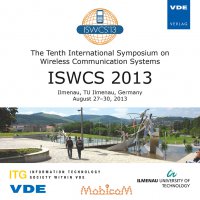Low Complexity Adaptive K-Best Sphere Decoder for 2x1 MISO DVB-T2
Conference: ISWCS 2013 - The Tenth International Symposium on Wireless Communication Systems
08/27/2013 - 08/30/2013 at Ilmenau, Deutschland
Proceedings: ISWCS 2013
Pages: 5Language: englishTyp: PDF
Personal VDE Members are entitled to a 10% discount on this title
Authors:
El-Banna, Ahmad A.Aziz; El-Sabrouty, Maha; Abdelrahman, Adel (Electronics and communications department, Egypt-Japan University of Science and Technology (E-JUST))
Abstract:
The second-generation terrestrial transmission system for digital television broadcasting (DVB-T2) exploits Space Frequency Block Codes (SFBC) by defining a modified Alamouti code in the frequency domain in its optional Multi Input Single Output (MISO) processing transmission. Linear decoding methods such as Zero-Forcing (ZF) and Minimum Mean Square Error (MMSE) are recommended by the DVB-T2 implementation guidelines. This paper presents two modified K-Best Sphere Decoder methods to enhance the performance of the system along with low extra added complexity. The first method adapts the K-paths of the decoder according to a Channel Quality Estimation (CQE) using the Channel State In formation (CSI) of the channel while the second method utilizes the estimated Signal-to-Noise Ratio (SNR) in its adaptation process. Both methods outperform the linear ZF decoding method defined by the DVB-T2 standard in the case of selective channels.


